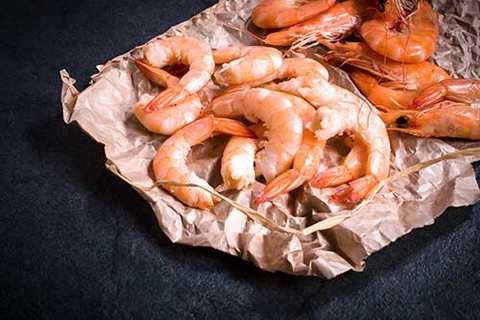Eating is an enjoyable experience for most of us, but it can be frightening and even life threatening for people with food allergies.
Allergy vs. intolerance
A harmful reaction to a food can be a result of a food allergy or a food intolerance. Allergies and intolerances are not the same. Food intolerances, such as lactose intolerance, are often due to an enzyme deficiency and cause problems with digestion. An intolerance does not involve the immune system. A true food allergy is the body's negative reaction to a particular food protein. It occurs when the immune system mistakenly believes a food is harmful.
The nine main food allergies
Any food has the potential to cause a reaction in a person who is allergic to that food, but only nine foods are responsible for 90 percent of all food allergic reactions. They are milk, eggs, peanuts, soy, wheat, tree nuts (walnuts, almonds), fish, shellfish (shrimp, lobster) and sesame. The Food Allergy Safety, Treatment, Education, and Research Act of 2021 (FASTER Act), adds sesame to the list of major food allergens for which labeling is required. It set Jan. 1, 2023, as the date by which food companies are required to declare the presence of sesame on food packaging labels.
The Food Allergy and Research Education reports up to 85 million Americans are impacted by food allergies and intolerances, including 32 million who have potentially life-threatening anaphylaxis. Although there are many theories, we do not yet fully understand the increase in numbers of food allergies. For example, peanut allergy in children has doubled in the last 5 years.
Symptoms of food allergies
Food allergy symptoms can range from a tingling in the mouth, swelling of lips, tongue and throat, difficulty breathing, hives, vomiting, abdominal cramps, diarrhea and loss of consciousness, to death. Every 3 minutes a food allergy reaction sends someone to the emergency room and each year 150 to 250 Americans die from food allergy reactions.
Avoid these situations
To prevent a reaction, avoid:
- Combination foods like soups and casseroles (hard to trace all ingredients).
- Buffet tables (potential cross contamination).
- Desserts (nuts may be in unexpected places).
- Inhaling vapors from cooking and baking of the allergen. For some peanut sensitive people, dust released from opening a peanut shell can cause a reaction.
- Using the same serving utensil for several foods, or allowing other opportunities for cross-contamination. Store, prepare and serve potential food allergens away from other food.
Also remember:
- Read ingredient labels. Identify ingredients that may cause a reaction. For example, people with a milk allergy must avoid foods that contain cheese, whey, rennet casein, artificial butter flavor, etc.
- Ask about ingredients and cooking methods used when eating away from home.
- Clean equipment/utensils that may have touched the allergen.
- Only one bite of the wrong food can lead to serious illness or even death!
Presently, there is no cure for food allergies. The only way to avoid a reaction is a complete avoidance of the allergy-causing food.
Reviewed in 2021


